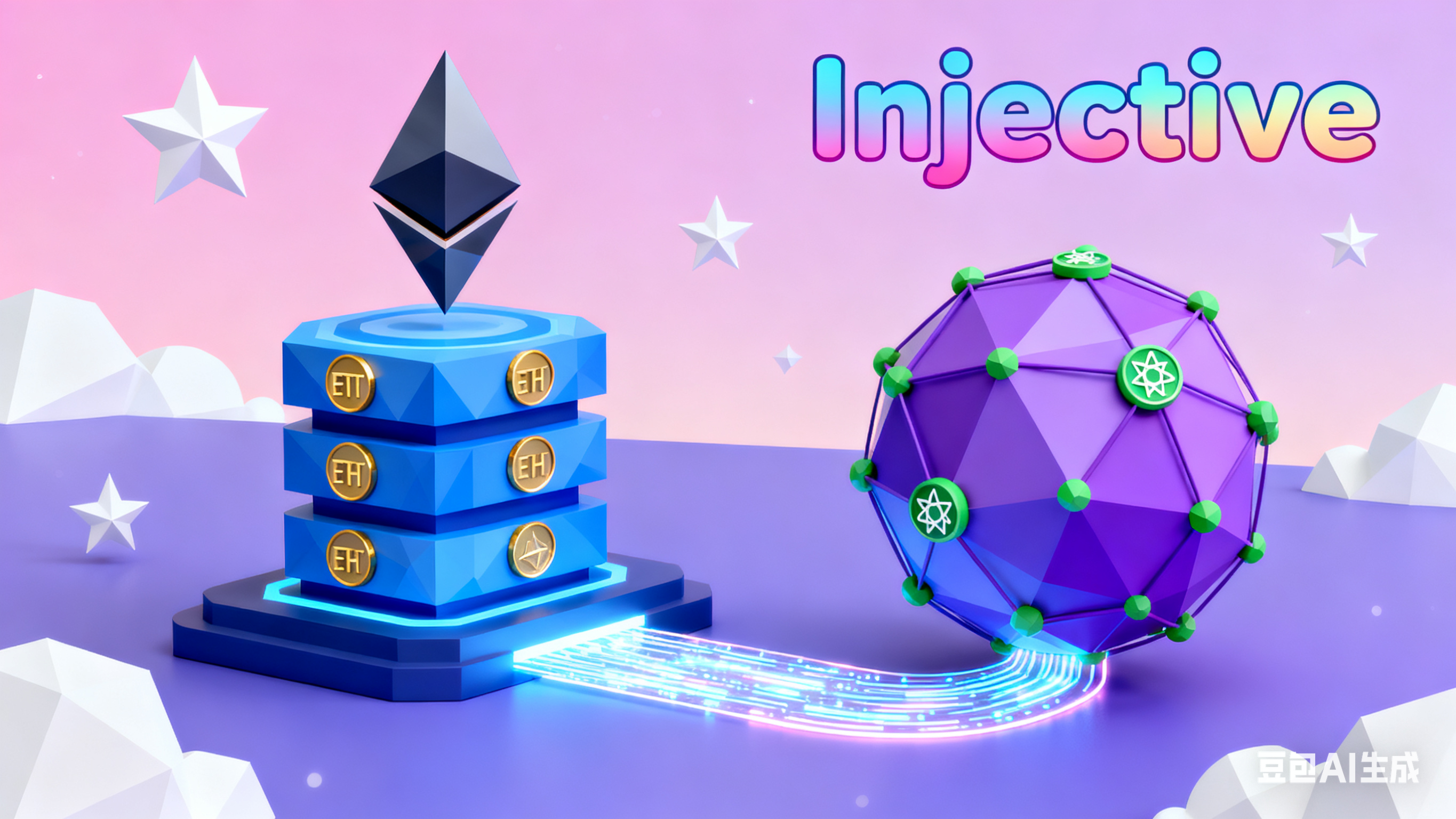
The first time I truly started paying attention to Injective was during those days when the community suddenly became active. There was no exaggerated promotion, nor was there a noisy token market, but the developer forum was fervently discussing a topic—Injective opened native EVM support. The atmosphere of discussion felt somewhat familiar, akin to when everyone first realized a few years ago that Layer2 would change Ethereum. At that moment, I realized that this 'quiet' public chain seemed to have truly reached a new stage.
Injective has always been that low-key yet strong project. While other chains are busy launching NFTs and doing airdrops, it has been committed to refining its performance and architecture in the realm of financial infrastructure. Over the past few years, its built Layer1 system has been known for being 'fast, stable, and cheap', but the latest upgrade has transformed it from just an efficient trading chain into a 'connector' that can redefine the operational logic of DeFi.
The EVM, or Ethereum Virtual Machine, is the core execution environment for most decentralized applications worldwide. Simply put, the EVM is the 'language system' of the Ethereum world. Smart contracts written by developers in Solidity run on the EVM. In the past, Ethereum and Injective belonged to two different systems; although they could be interconnected via bridges, the experience was not good—slow transfers, high risks, and expensive costs.
Now, Injective's native EVM support has completely eliminated this barrier. Developers no longer need complex migration processes; using familiar tools like Hardhat, Remix, and MetaMask, they can deploy applications directly on Injective. Even better, the experience is almost 'second-level': the average transaction cost is less than one cent, and confirmation times are several orders of magnitude faster than on Ethereum. This is an ideal environment for DeFi developers.
However, the significance of this update goes beyond mere 'compatibility.' It is actually part of Injective's grander MultiVM system. As the name suggests, MultiVM allows multiple virtual machines—such as EVM and CosmWasm—to coexist on the same chain. This means that an application can run like Ethereum or be modularly deployed like Cosmos, or even call each other and share liquidity.
In other words, Injective is trying to eliminate the 'language barrier' in the blockchain world. In the past, each ecosystem was an island—Ethereum was one world, Cosmos another, and Solana yet another. The flow of assets and applications between these islands was always expensive and troublesome. Injective hopes to achieve true interoperability at the underlying architecture level—allowing developers and users to no longer be constrained by ecosystem boundaries.
This is also why more and more projects are starting to 'land' on Injective recently. From stablecoin protocols, derivatives platforms to on-chain exchanges, there are almost daily updates about new deployments. For users, this means lower transaction costs, faster interaction experiences, and smoother cross-chain asset flow. The overall activity of the network is steadily increasing, with locked assets, transaction volumes, and the number of developers all growing in sync.
Beyond technological breakthroughs, Injective is also considered one of the most promising platforms for 'real-world asset tokenization' (RWA). Traditional financial products—whether bonds, treasury bills, or real estate rights—are gradually being digitized, and they require a high-performance, low-cost, and compliance-friendly blockchain environment. Injective's architecture is precisely suited to this need: its matching and settlement logic was originally designed for complex financial instruments, making it inherently suitable for handling the trading and clearing of these assets.
More importantly, all of this remains decentralized. Injective's trading, contract execution, and cross-chain asset movement are all automatically completed by smart contracts, without relying on centralized matching institutions or managers. This gives it a natural advantage in facing future regulatory and transparency requirements.
Of course, this upgrade will not immediately change the entire DeFi landscape. Ecosystem migration takes time, and liquidity must accumulate gradually. But Injective's past pace has proven its execution capability—there are no lengthy empty promises, and every upgrade is genuinely launched and runs smoothly.
From a broader perspective, Injective's goal is not to challenge Ethereum or Cosmos, but to become a bridge between them. The support for EVM allows Ethereum developers to migrate easily, while its native Cosmos architecture enables applications to directly interact with other chains using IBC (Inter-Blockchain Communication). This 'bidirectional openness' design makes Injective a key hub for connecting different ecosystem liquidity.
For users in emerging markets, such infrastructure is even more significant. Imagine if cross-border transfers, stablecoin settlements, and even on-chain credit could be completed at almost zero cost and in seconds; financial inclusion would no longer just be a slogan. Injective's efficiency and openness might be a crucial part of achieving this goal.
Of course, there are still challenges ahead. The expansion of the ecosystem relies on continuous developer investment and capital inflow; how to maintain the growth momentum while ensuring the decentralization and stability of the network is a problem that Injective needs to solve next. However, judging from the performance over the past year, it has demonstrated a rare ability for 'steady evolution.'
Now, with the official launch of the native EVM, Injective is no longer just a 'fast chain' or 'trading chain,' but is becoming a foundational platform that gathers different ecosystems and connects traditional and crypto finance. It allows Ethereum developers, Cosmos' modular system, and the tokenization of real-world assets to coexist naturally on the same network.
Perhaps years from now, when we talk about the next phase of DeFi, Injective will not be remembered as a 'substituter,' but rather as the 'connector' that truly facilitates collaboration between different systems. It is not chasing short-term hype but is building a more universal, efficient, and open financial foundation step by step.
In this noisy crypto world, Injective's approach remains the same: quietly yet steadily pushing forward.


